Expansion of Image Space in Enhanced-NA Fresnel Holographic Display
Abstract
:1. Introduction
2. Holographic Image Reconstructed from Enhanced-NA Phase Fresnel Hologram
2.1. Analysis of Angular Field of View of Holographic Image Dependent on Hologram Numerical Aperture
2.2. Expansion of Image Space and Its Reconstruction Property Depending on Viewing Angle
3. Optical Reconstruction from Enhanced-NA Fresnel Hologram without Sacrificing Image Size
4. Viewing Angle Enlargement of Holographic Image and Discussions
5. Conclusions
Funding
Institutional Review Board Statement
Informed Consent Statement
Data Availability Statement
Conflicts of Interest
References
- Goodman, J.W. Introduction to Fourier Optics; Roberts and Company: Englewood, CO, USA, 2005. [Google Scholar]
- Park, J.; Lee, K.; Park, Y. Ultrathin wide-angle large-area digital 3D holographic display using a non-periodic photon sieve. Nat. Commun. 2019, 10, 1304. [Google Scholar] [CrossRef] [PubMed] [Green Version]
- Yamamoto, K.; Ichihashi, Y.; Senoh, T.; Oi, R.; Kurita, T. 3D objects enlargement technique using an optical system and multiple SLMs for electronic holography. Opt. Express 2012, 20, 21137–21144. [Google Scholar] [CrossRef] [PubMed]
- Tsang, P.; Poon, T.-C. Novel method for converting digital Fresnel hologram to phase-only hologram based on bidirectional error diffusion. Opt. Express 2013, 21, 23680–23686. [Google Scholar] [CrossRef] [PubMed] [Green Version]
- Hahn, J.; Kim, H.; Lim, Y.; Park, G.; Lee, B. Wide viewing angle dynamic holographic stereogram with a curved array of spatial light modulators. Opt. Express 2008, 16, 12372–12386. [Google Scholar] [CrossRef]
- Kozacki, T.; Kujawińska, M.; Finke, G.; Hennelly, B.; Pandey, N. Extended viewing angle holographic display system with tilted SLMs in a circular configuration. Appl. Opt. 2012, 51, 1771–1780. [Google Scholar] [CrossRef] [Green Version]
- Takaki, Y.; Uchida, S. Table screen 360-degree three-dimensional display using a small array of high-speed projectors. Opt. Express 2012, 20, 8848–8861. [Google Scholar] [CrossRef]
- Yaraş, F.; Kang, H.; Onural, L. Circular holographic video display system. Opt. Express 2011, 19, 9147–9156. [Google Scholar] [CrossRef] [Green Version]
- Chae, B.G. Wide viewing-angle holographic display based on enhanced-NA Fresnel hologram. Opt. Express 2021, 29, 38221–38236. [Google Scholar] [CrossRef]
- Chae, B.G. Analysis on angular field of view of holographic image dependent on hologram numerical aperture in holo-graphic display. Opt. Eng. 2020, 59, 035103. [Google Scholar] [CrossRef]
- Onural, L. Sampling of the diffraction field. Appl. Opt. 2000, 39, 5929–5935. [Google Scholar] [CrossRef] [Green Version]
- Stern, A.; Javidi, B. Analysis of practical sampling and reconstruction from Fresnel fields. Opt. Eng. 2004, 43, 239–250. [Google Scholar] [CrossRef]
- Chae, B.G. Analysis on image recovery for on-axis digital Fresnel hologram with aliased fringe generated from self-similarity of point spread function. Opt. Commun. 2020, 466, 125609. [Google Scholar] [CrossRef]
- Wyrowski, F.; Bryngdahl, O. Iterative Fourier-transform algorithm applied to computer holography. J. Opt. Soc. Am. A 1988, 5, 1058–1065. [Google Scholar] [CrossRef]
- Hsueh, C.K.; Sawchuk, A.A. Computer-generated double-phase holograms. Appl. Opt. 1978, 17, 3874–3883. [Google Scholar] [CrossRef] [PubMed]
- Wu, Y.; Wang, J.; Chen, C.; Liu, C.-J.; Jin, F.-M.; Chen, N. Adaptive weighted Gerchberg-Saxton algorithm for generation of phase-only hologram with artifacts suppression. Opt. Express 2021, 29, 1412–1427. [Google Scholar] [CrossRef] [PubMed]
- Gerchberg, R.W.; Saxton, W.O. A practical algorithm for the determination of phase from image and diffraction plane pictures. Optik 1972, 35, 237–246. [Google Scholar]
- Fienup, J.R. Phase retrieval algorithms: A comparison. Appl. Opt. 1982, 21, 2758–2769. [Google Scholar] [CrossRef] [PubMed] [Green Version]
- Mas, D.; Garcia, J.; Ferreira, C.; Bernardo, L.M.; Marinho, F. Fast algorithms for free-space diffraction patterns calcula-tions. Opt. Commun. 1999, 164, 233–245. [Google Scholar] [CrossRef]
- Cottrell, D.M.; Davis, J.A.; Hedman, T.; Lilly, R.A. Multiple imaging phase-encoded optical elements written as pro-grammable spatial light modulators. Appl. Opt. 1990, 29, 2505–2509. [Google Scholar] [CrossRef]
- Carcolé, E.; Campos, J.; Juvells, I.; Bosch, S. Diffraction efficiency of low-resolution Fresnel encoded lenses. Appl. Opt. 1994, 33, 6741–6746. [Google Scholar] [CrossRef]
- Moharam, M.G.; Gaylord, T.K. Three-dimensional vector coupled-wave analysis of planar-grating diffraction. J. Opt. Soc. Am. 1983, 73, 1105–1112. [Google Scholar] [CrossRef]
- Harvey, J.E.; Vernold, C.L. Description of Diffraction Grating Behavior in Direction Cosine Space. Appl. Opt. 1998, 37, 8158–8160. [Google Scholar] [CrossRef]
- Peng, Y.; Choi, S.; Padmanaban, N.; Wetzstein, G. Neural holography with camera-in-the-loop training. ACM Trans. Graph. 2020, 39, 1–14. [Google Scholar] [CrossRef]
- Shi, L.; Li, B.; Kim, C.; Kellnhofer, P.; Matusik, W. Towards real-time photorealistic 3D holography with deep neural networks. Nature 2021, 591, 234–239. [Google Scholar] [CrossRef] [PubMed]
- Chen, L.; Zhang, H.; Cao, L.; Jin, G. Non-iterative phase hologram generation with optimized phase modulation. Opt. Express 2020, 28, 11380–11392. [Google Scholar] [CrossRef]
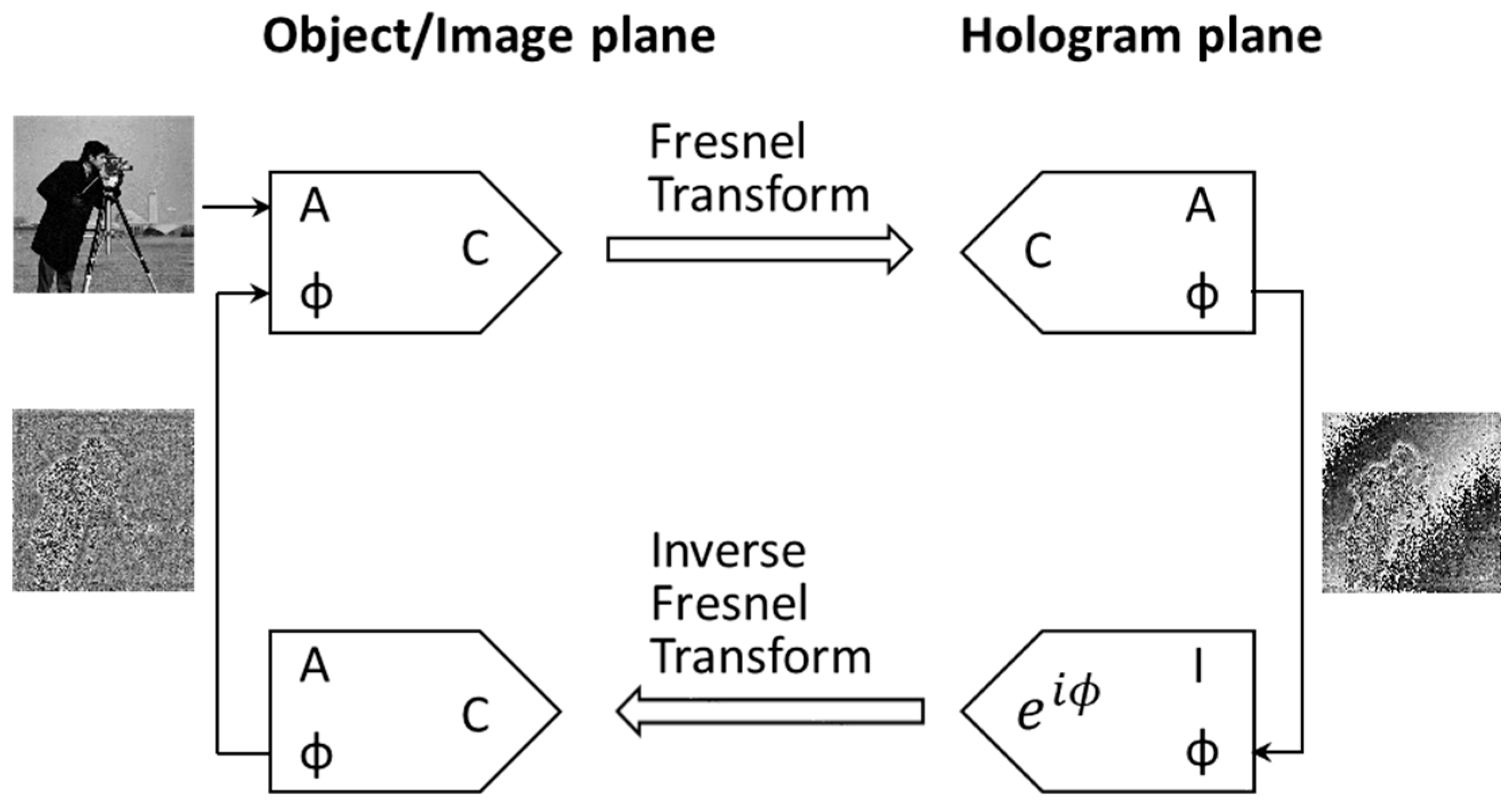
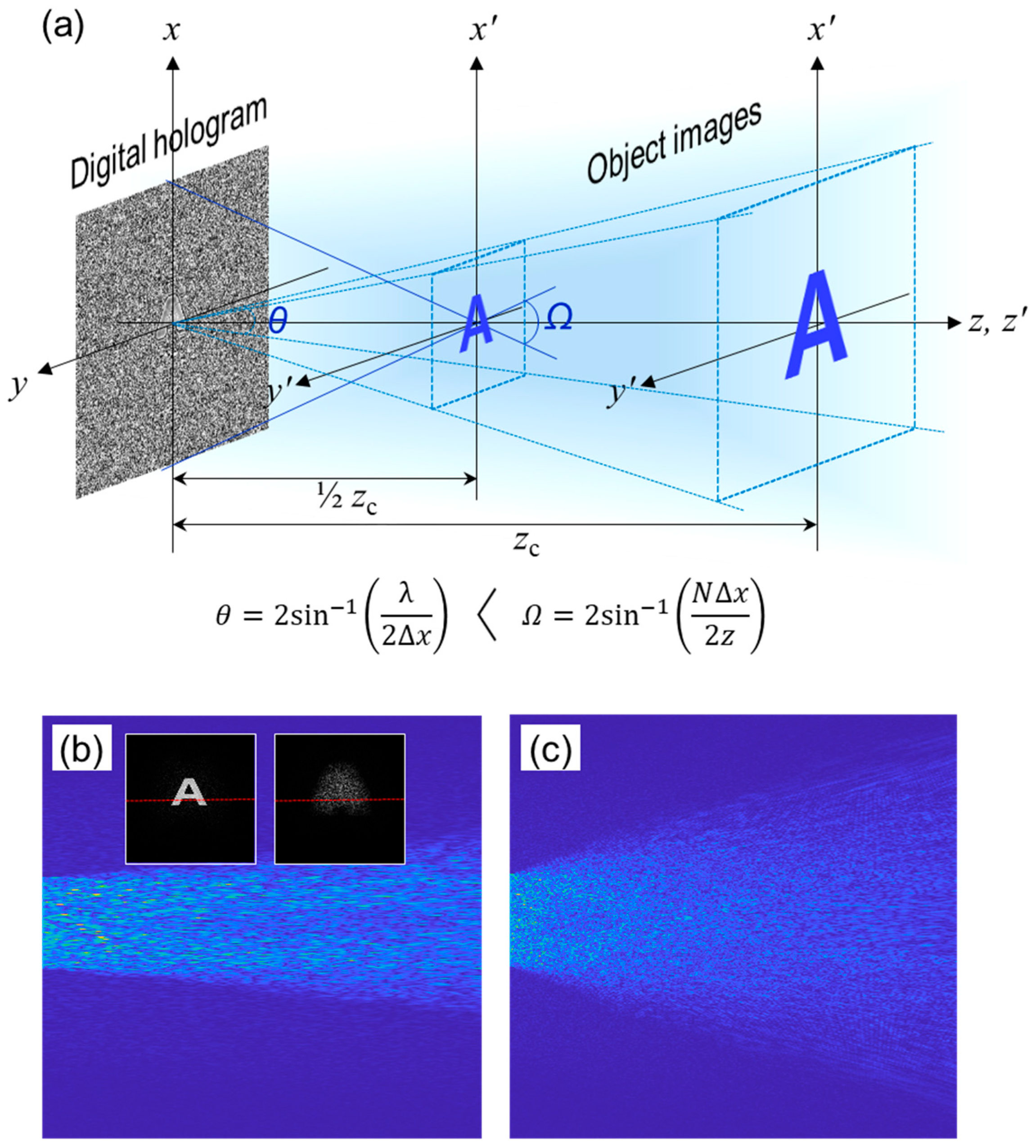
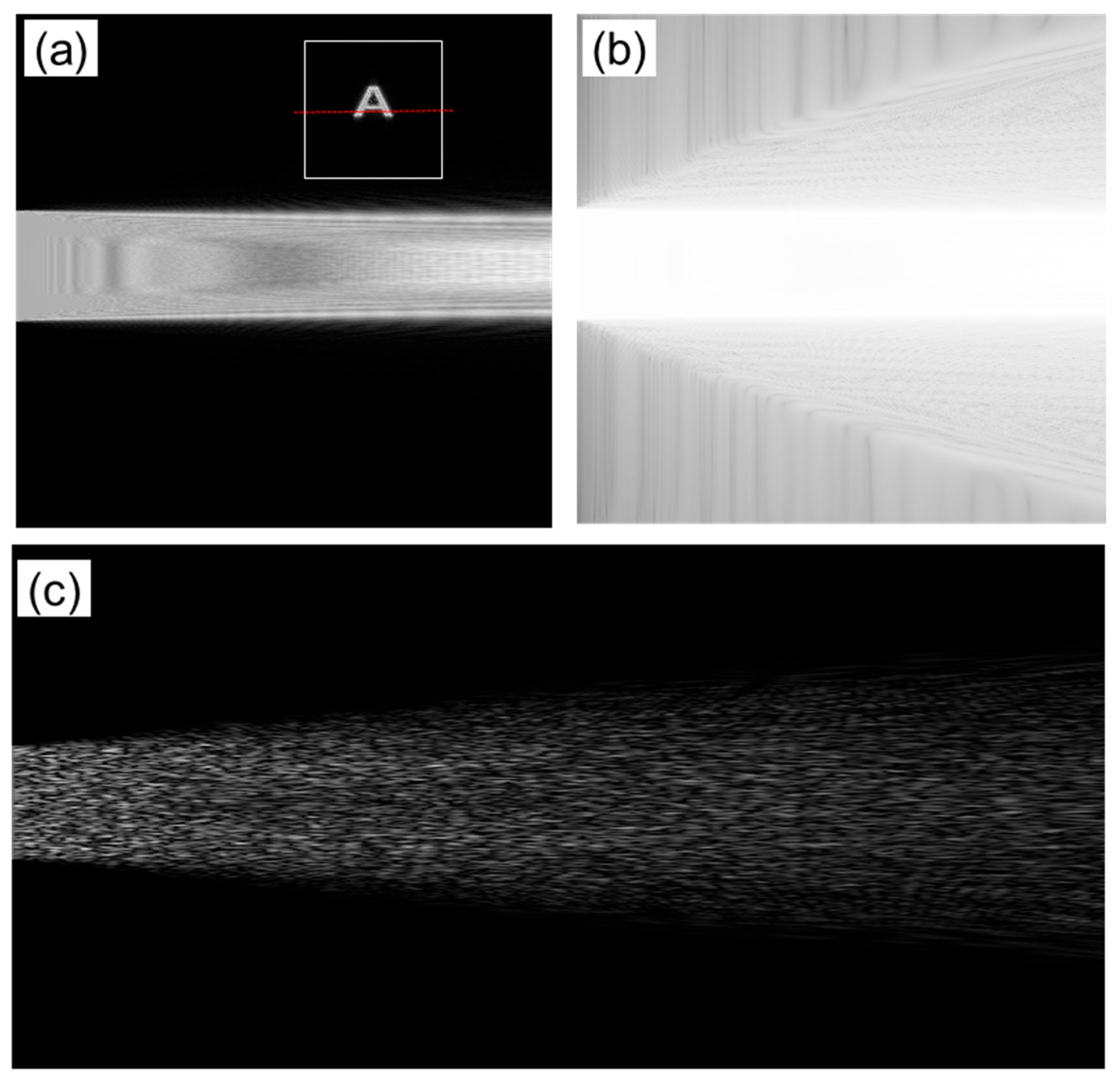
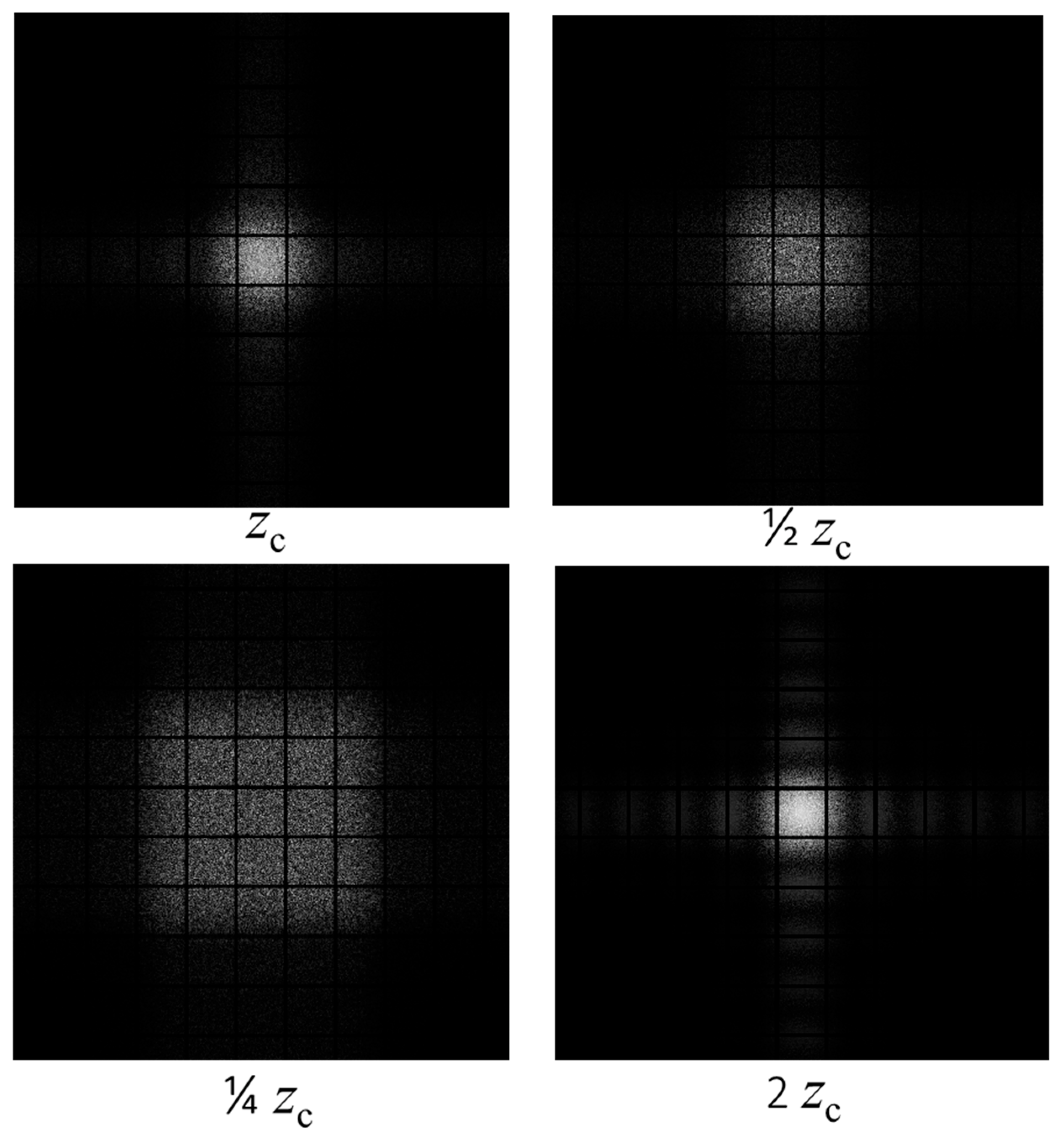
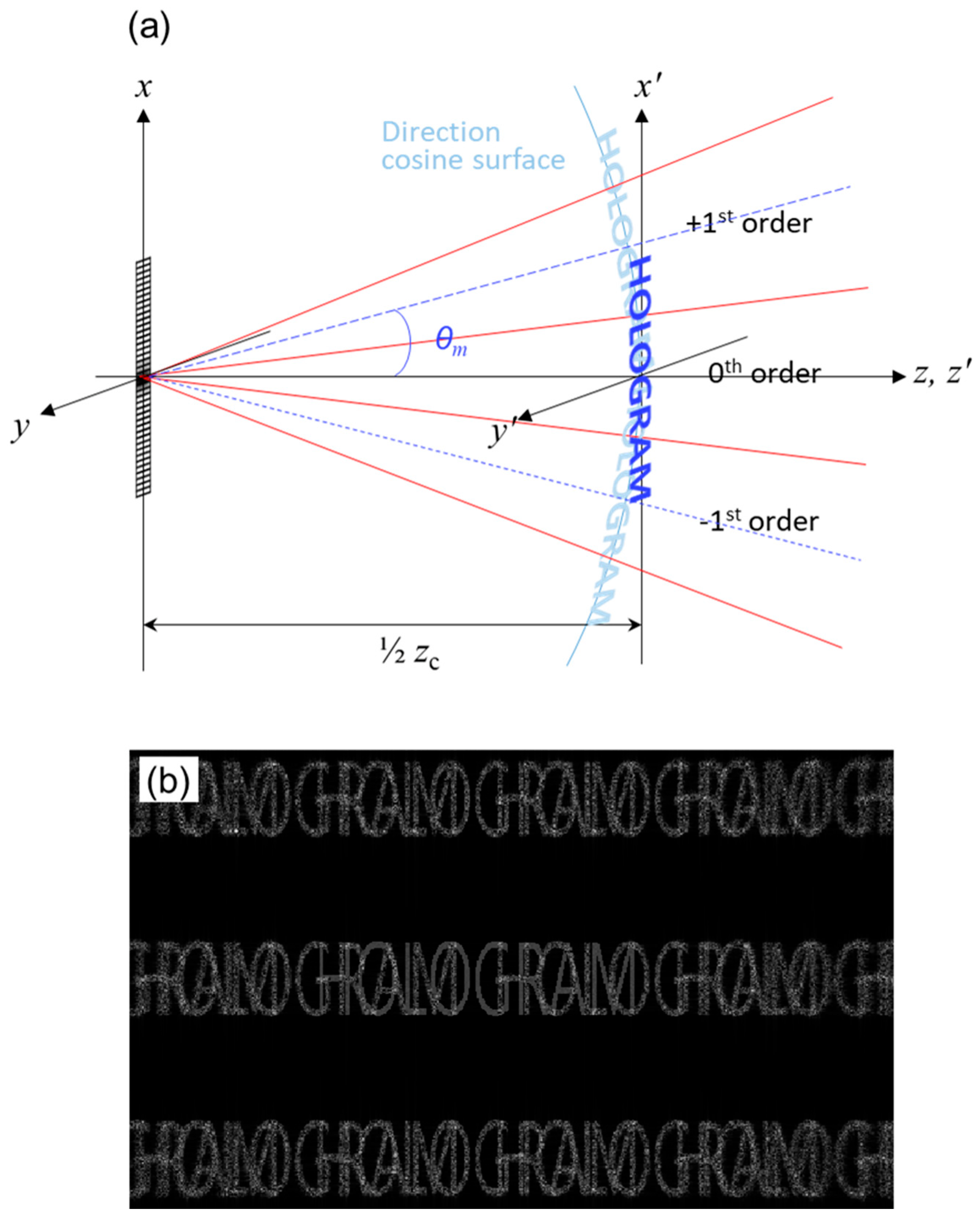
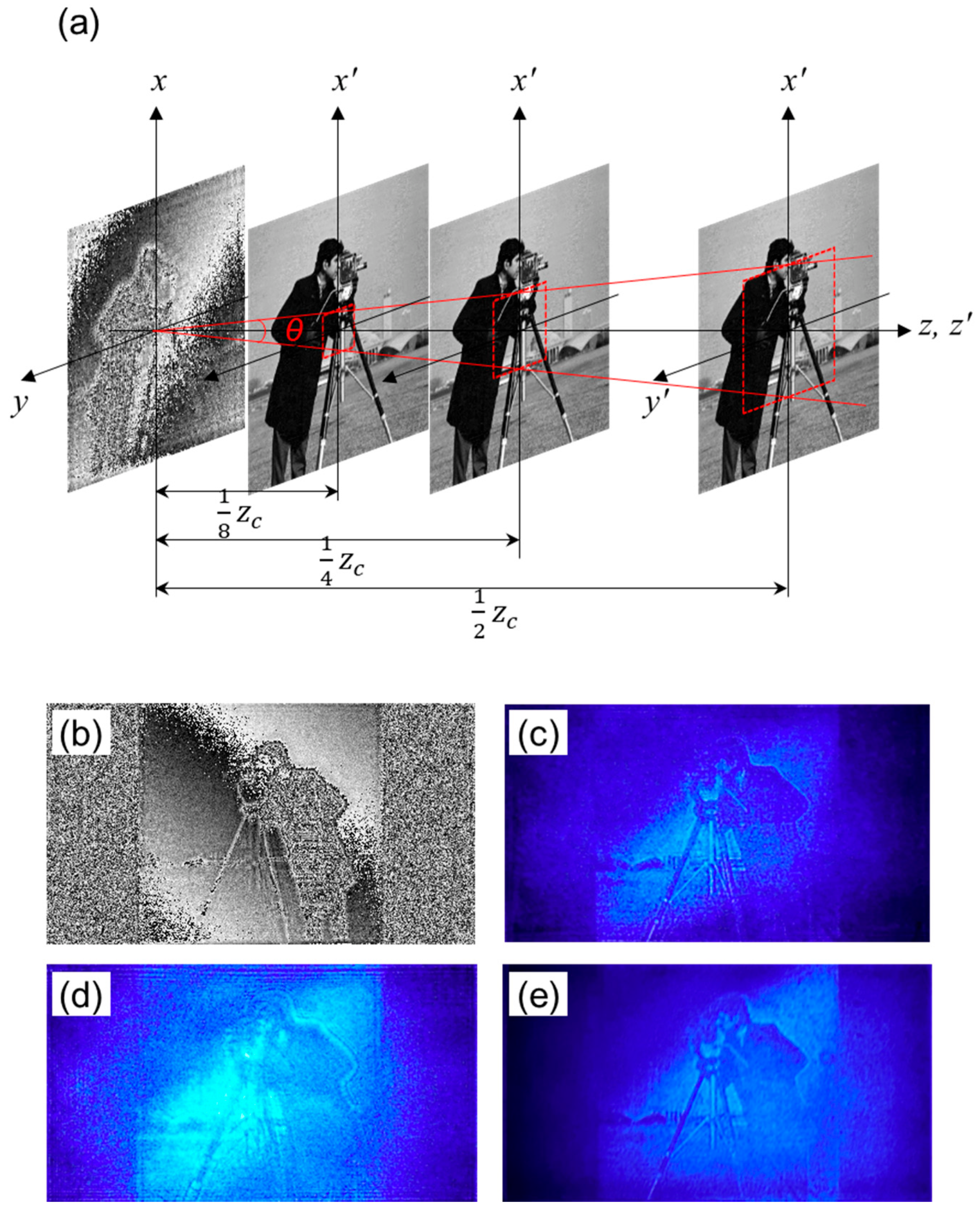
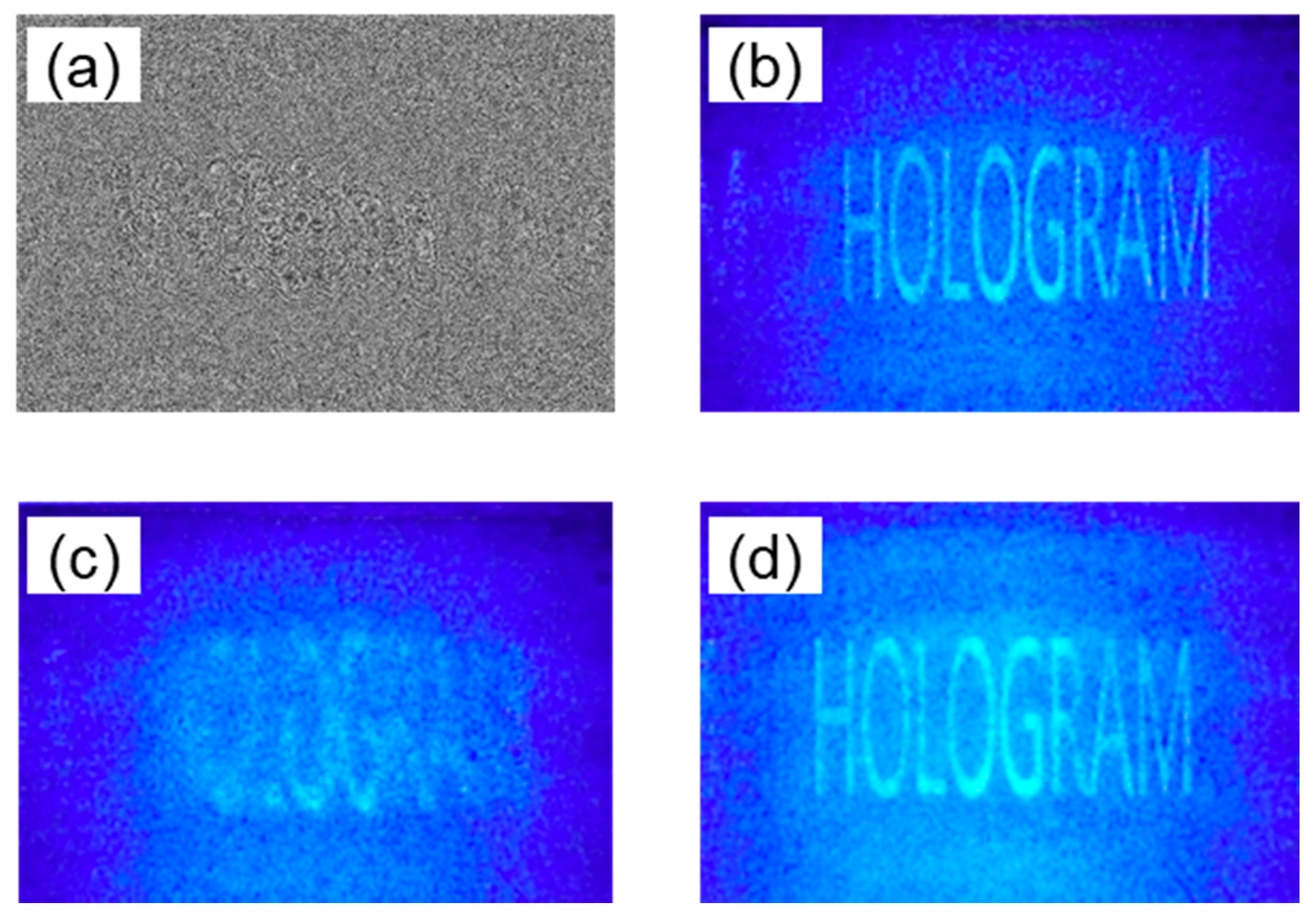

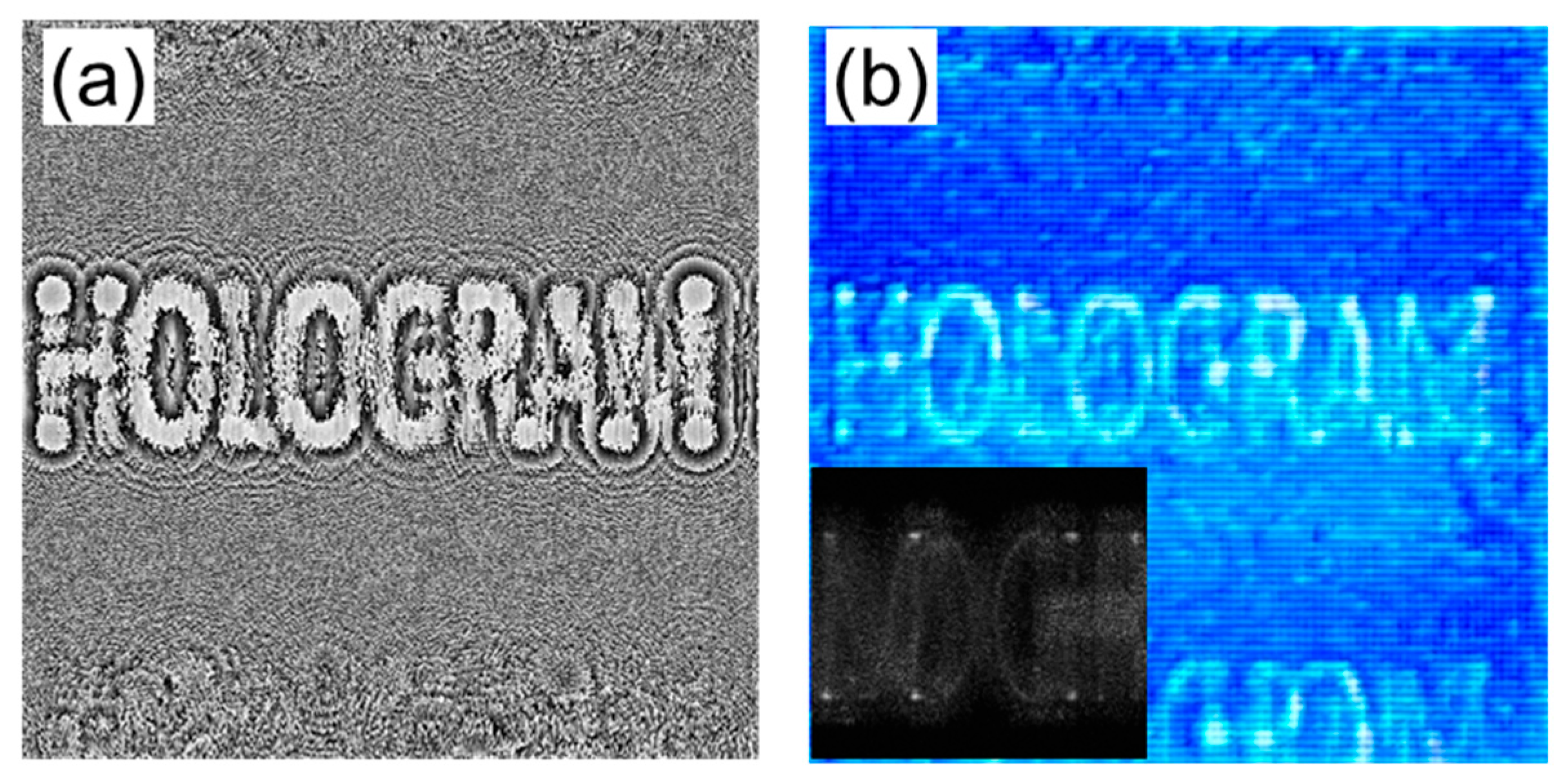
Publisher’s Note: MDPI stays neutral with regard to jurisdictional claims in published maps and institutional affiliations. |
© 2022 by the author. Licensee MDPI, Basel, Switzerland. This article is an open access article distributed under the terms and conditions of the Creative Commons Attribution (CC BY) license (https://creativecommons.org/licenses/by/4.0/).
Share and Cite
Chae, B.G. Expansion of Image Space in Enhanced-NA Fresnel Holographic Display. Appl. Sci. 2022, 12, 4148. https://doi.org/10.3390/app12094148
Chae BG. Expansion of Image Space in Enhanced-NA Fresnel Holographic Display. Applied Sciences. 2022; 12(9):4148. https://doi.org/10.3390/app12094148
Chicago/Turabian StyleChae, Byung Gyu. 2022. "Expansion of Image Space in Enhanced-NA Fresnel Holographic Display" Applied Sciences 12, no. 9: 4148. https://doi.org/10.3390/app12094148
APA StyleChae, B. G. (2022). Expansion of Image Space in Enhanced-NA Fresnel Holographic Display. Applied Sciences, 12(9), 4148. https://doi.org/10.3390/app12094148




